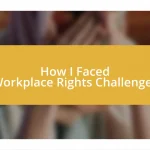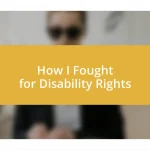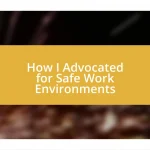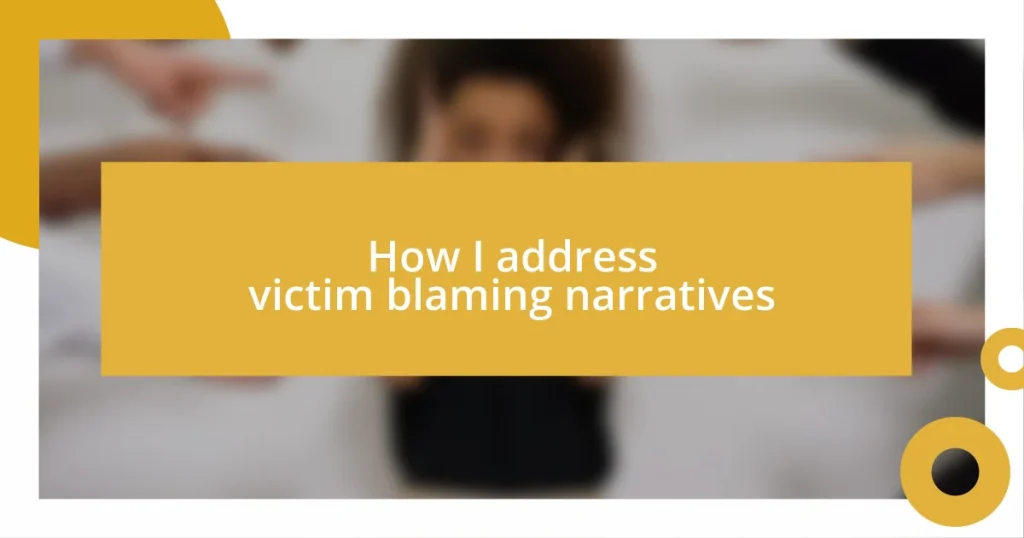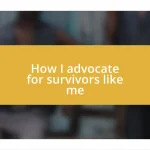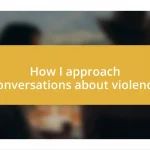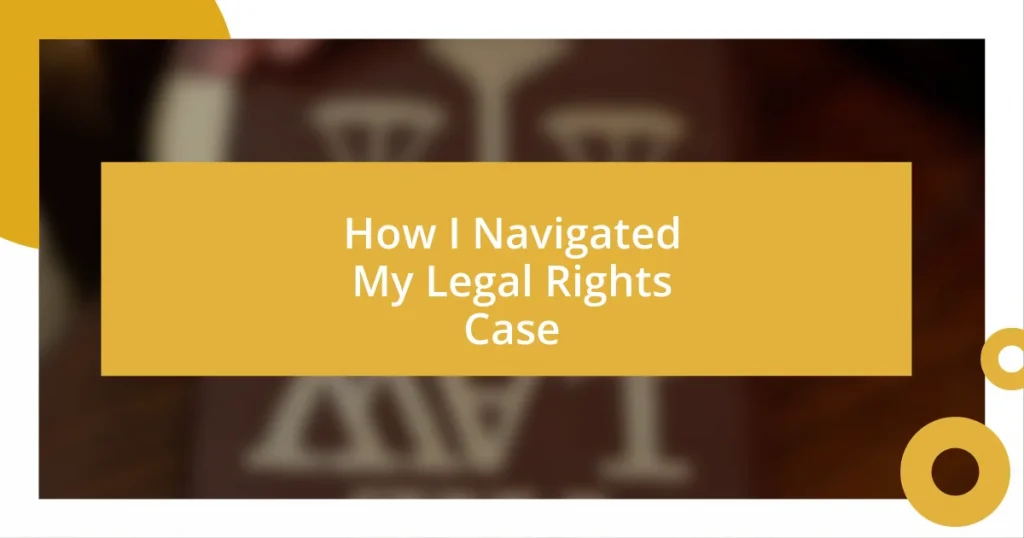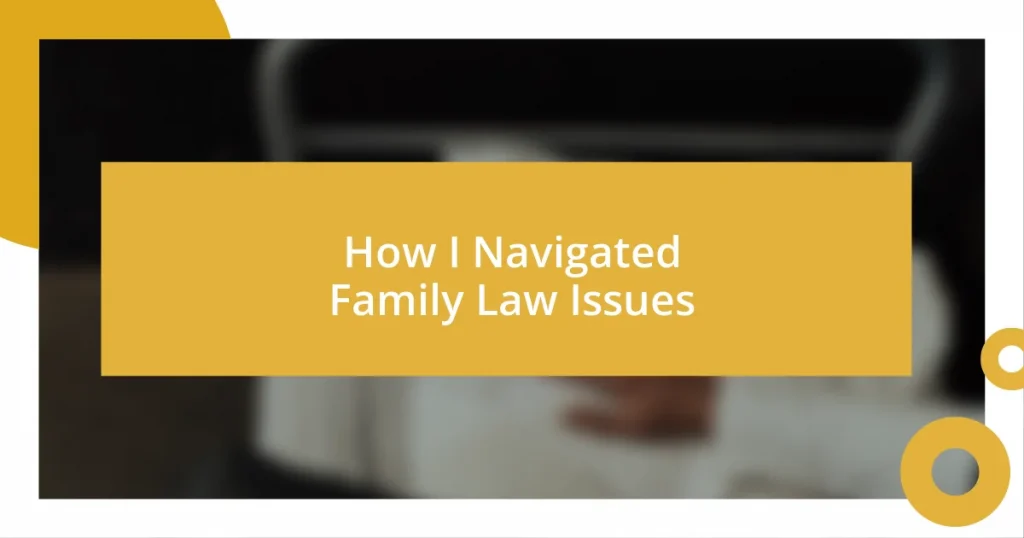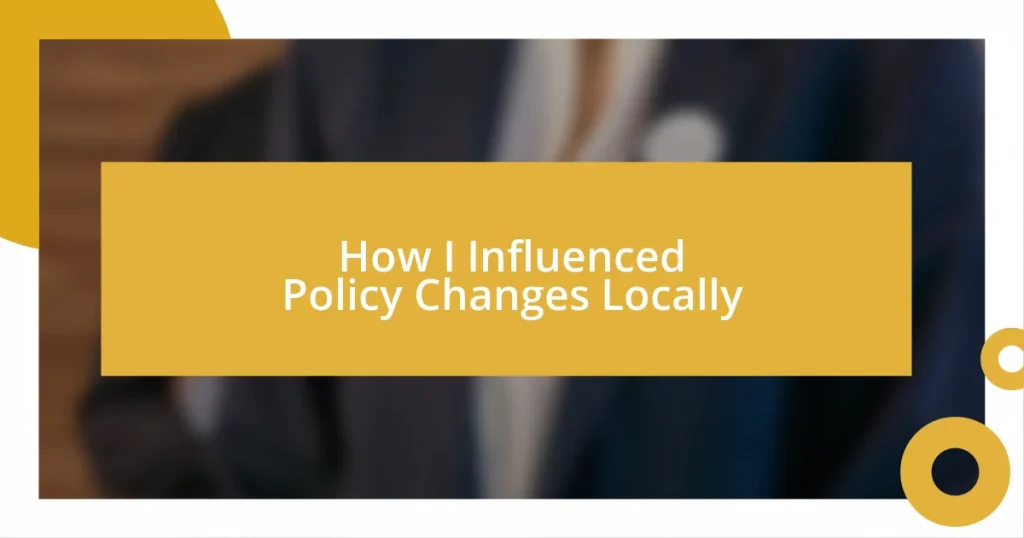Key takeaways:
- Victim blaming often stems from a need to maintain a false sense of security and can perpetuate feelings of isolation and shame for victims.
- Common myths about victimhood, such as “they should have known better” and “clothing justifies violence,” hinder empathy and understanding, highlighting the need for education and awareness.
- Creating supportive environments through active listening, visible symbols of support, and ongoing dialogue fosters empowerment and healing for victims.
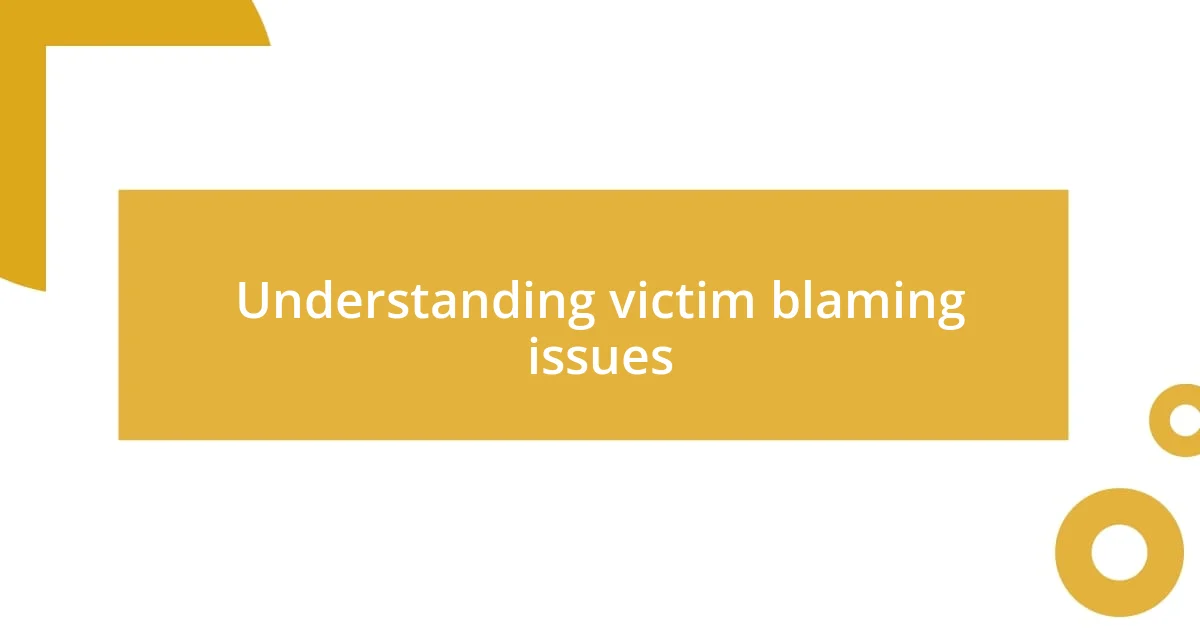
Understanding victim blaming issues
Victim blaming can feel like a gut punch, particularly for those already grappling with trauma. I remember a friend who experienced a break-in; instead of receiving support, some questioned why she didn’t lock her door. It left her feeling isolated, as if she bore the responsibility for the crime itself. Why do we often look to place blame instead of offering empathy?
When we delve into the psyche behind victim blaming, it reveals a disturbing need for control—both for the victim and the observer. I’ve noticed that many people struggle with the idea that crime can happen to anyone, so they unconsciously shift blame to maintain a false sense of security. Breaking this cycle requires awareness; asking ourselves why we react this way can be a pivotal step in fostering a supportive dialogue.
The nuances of victim blaming can be incredibly complex, rendering simple solutions elusive. I once attended a discussion where a survivor shared her experience; she noted the defensiveness people often exhibit when she recounted her story. This discomfort can stem from fear—fear that we might not be safe or that our own choices could be questioned. Understanding these dynamics challenges us to cultivate compassion instead of judgment, opening the door for true healing.
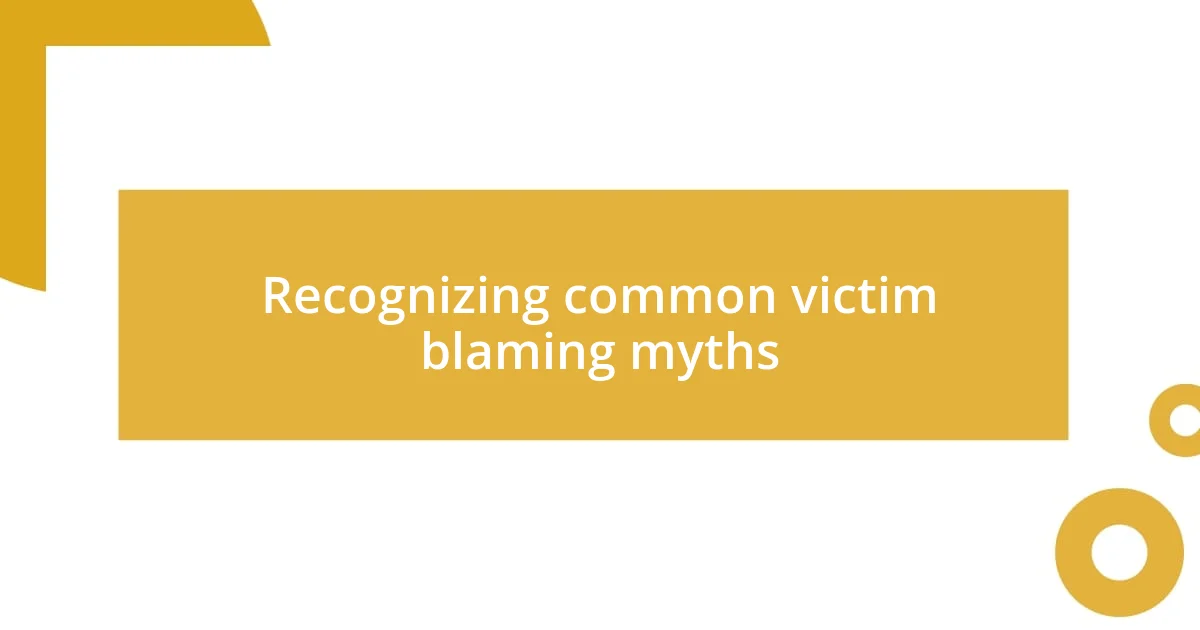
Recognizing common victim blaming myths
It’s imperative to recognize the common myths surrounding victim blaming, as they can deeply distort our understanding of trauma. For instance, one prevalent myth suggests that victims provoke the harm they endure through their behavior. I once heard a colleague share a story about a student who was bullied for her attire; instead of chastising the bullies, some suggested that her clothing choices somehow justified the harassment. This kind of thinking can perpetuate shame and guilt in victims who have already suffered enough.
Here’s a breakdown of some common victim blaming myths:
-
Myth 1: “They should have known better.” Many believe that victims foresee danger and can avoid it if they are cautious enough, which places undue pressure on them.
-
Myth 2: “If they did not fight back, they must have consented.” This dangerous assumption ignores the complexities of trauma responses, where many victims freeze or comply due to fear.
-
Myth 3: “Victims exaggerate their experiences.” This dismissive view can trivialize the pain of the victim, making them hesitant to speak out.
-
Myth 4: “They were at the wrong place at the wrong time.” This notion fuels the idea that geography or circumstance justifies blame, undermining accountability for perpetrators.
Acknowledging these myths is essential in combating victim blaming and fostering a more empathetic society. I’ve seen how awareness can shift discussions and create more supportive environments for those affected by trauma.
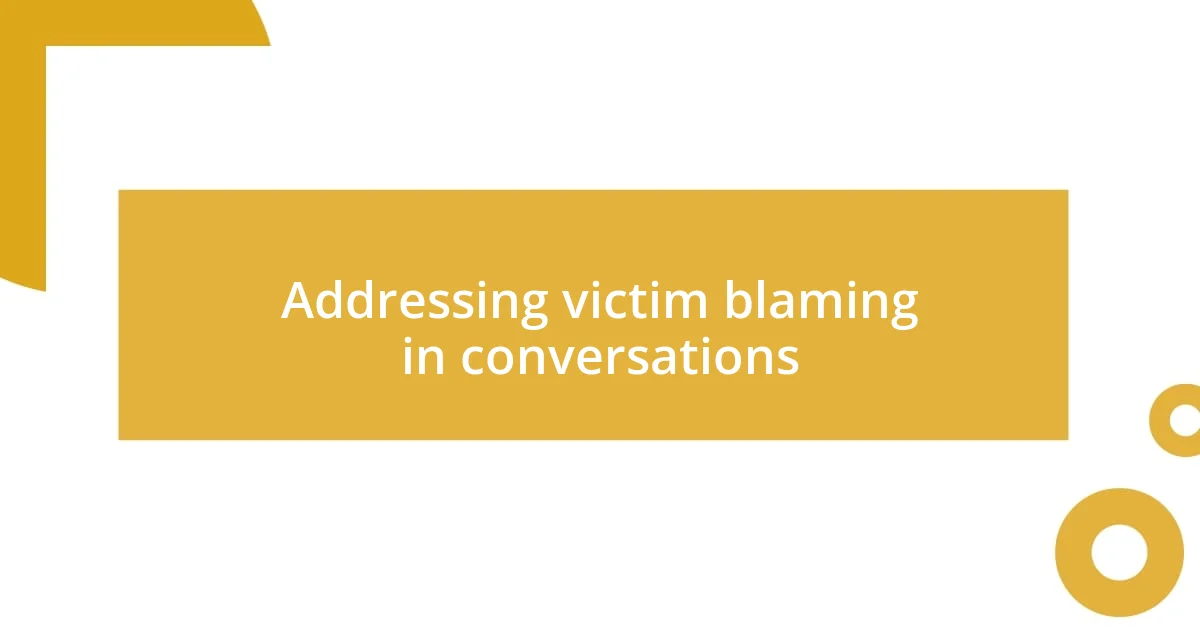
Addressing victim blaming in conversations
When discussing victim blaming, choosing our words carefully is essential. I recall a time during a community workshop, where someone openly blamed a survivor for their assault. It struck me how powerful language can be; instead of creating a safe space, we inadvertently perpetuate harm with careless comments. A simple redirection—like asking, “What can we do to support those affected?”—can shift the focus from blame to healing.
I’ve learned that staying informed about the trauma spectrum helps in addressing these narratives. I once found myself in a conversation where the topic of consent became murky. Instead of engaging in a debate, I shared insights on how trauma can alter a person’s reactions or memory. This approach often leads to deeper discussions, inviting others to understand rather than retreat into defensiveness.
Asking myself how my past experiences shape my perceptions has been eye-opening. For instance, I remember when a friend shared her story of harassment, and at first, I hesitated, thinking of how society might judge her. But rather than providing a knee-jerk reaction, I chose to listen fully, driving home the importance of validating feelings. This reinforces the idea that our conversations can either uplift or weigh down those already carrying heavy burdens.
| Common Conversations | Empathetic Responses |
|---|---|
| “Why didn’t they just leave?” | “It’s crucial to consider how complex these situations can be; let’s support them instead.” |
| “They should have known better.” | “No one deserves to be harmed, regardless of their choices.” |
| “What were they wearing?” | “Clothing doesn’t dictate consent or justify violence.” |
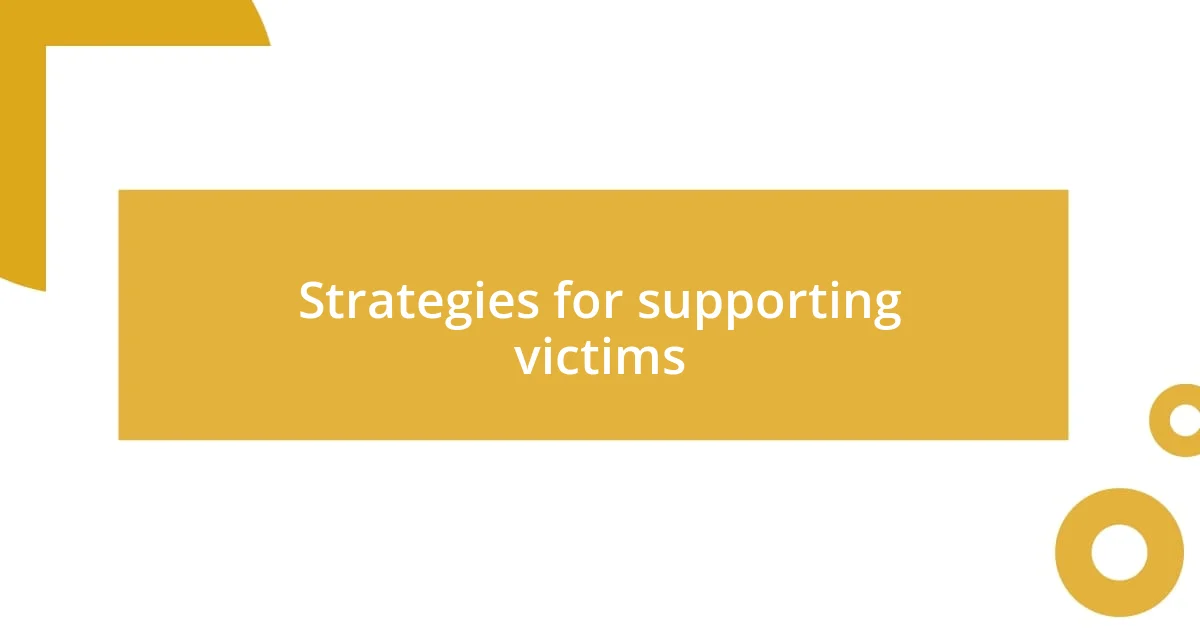
Strategies for supporting victims
Supporting victims requires an empathetic approach that prioritizes their feelings and experiences. I remember a time when a close friend confided in me about a traumatic experience. Instead of bombarding her with questions or advice, I simply held space for her emotions. Just being present and offering my ears can relieve the burden they feel, making them less alone in their struggle.
Another effective strategy is to provide practical help without being intrusive. I once volunteered at a support center, where I witnessed firsthand how small acts of kindness—like offering a meal or helping with paperwork—can profoundly impact a victim’s recovery. It’s amazing how these gestures can foster a sense of normalcy and stability amid chaos. Have you ever thought about how much a simple cup of coffee shared in conversation can create a compassionate space to open up?
Additionally, understanding the importance of ongoing support is crucial. In my experience, checking in regularly can make a world of difference. After all, recovery isn’t linear. I’ve learned that a text message or a brief call can help remind victims that they are not defined by their trauma and that they have unwavering support. These small, consistent gestures contribute to healing and empower victims as they navigate their journeys.
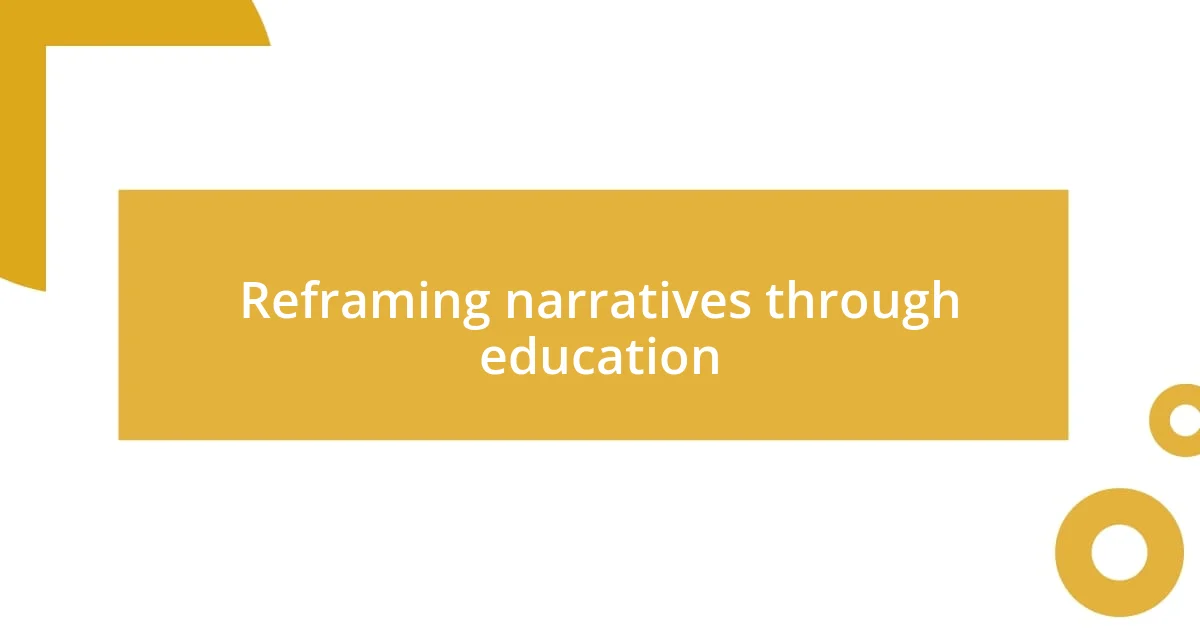
Reframing narratives through education
Reframing narratives through education can create a significant shift in how we perceive and discuss victimization. I recall a workshop I attended on empathy and awareness, where the facilitator highlighted the impact of societal narratives. It was an eye-opener; learning about how these stories shape our assumptions about victims allowed me to see the need for re-educating our communities. With each story we hear in educational settings, we gradually unravel the embedded biases that often go unnoticed.
In one session, participants were invited to share their understandings of consent, and I was thrilled to see how some of the most mistaken beliefs were challenged. One participant shared their misunderstanding about consent during intoxication, and after discussing the legal and emotional implications, the room felt charged with new awareness. It reinforced my belief that education isn’t simply about facts; it’s about evolving our emotional intelligence. Isn’t it fascinating to think that a single conversation can unravel years of miseducation?
I remember taking part in a community panel where survivors shared their experiences alongside professionals in victim advocacy. Listening to them recount their stories made me realize that narratives are not just stories—they’re lives lived, lessons learned, and a call for understanding. This blending of personal and educational narratives can empower everyone involved, transforming how we perceive victims and challenging harmful assumptions. How can we continue to create spaces for these vital conversations? This is where the role of education becomes not just important—it’s essential.
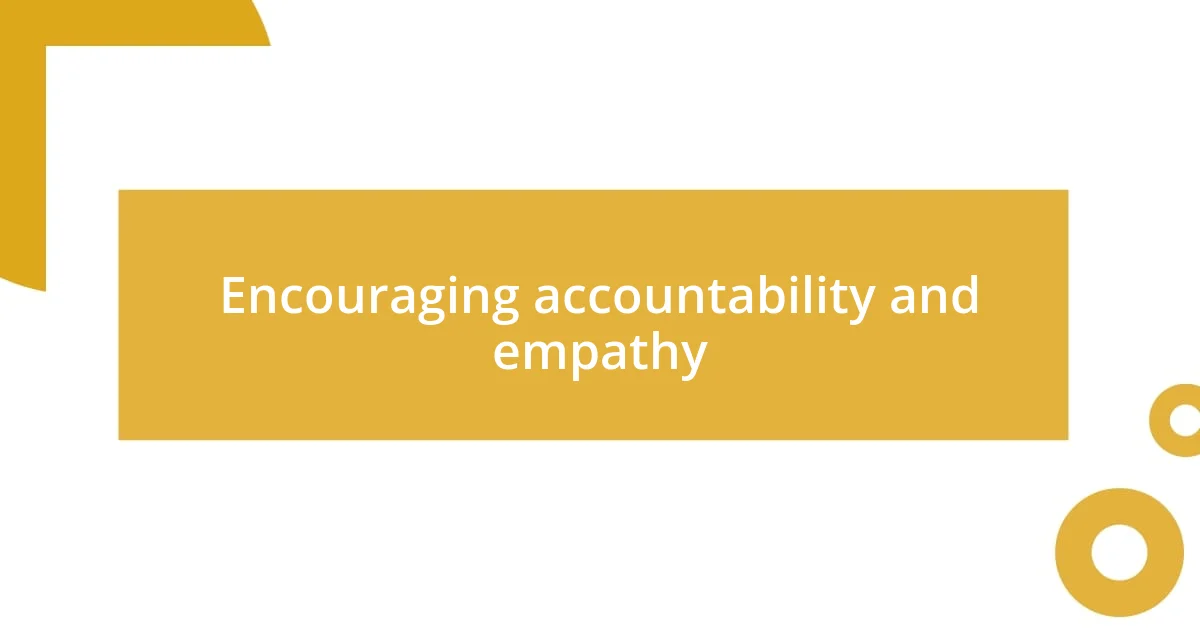
Encouraging accountability and empathy
While addressing victim-blaming narratives, I find that encouraging accountability is crucial in fostering a culture of empathy. When someone shares their experience of being victimized, I often ask reflective questions like, “How could we have approached that differently?” This not only prompts personal growth but also creates a safe space for individuals to explore their beliefs about accountability without being defensive.
Empathy flourishes when we recognize our shared human experience. Remembering a moment from my life, I once listened to a colleague express her frustrations after a difficult encounter. As she spoke, I realized how important it was to validate her feelings. Simply saying, “I can’t imagine what you’re going through, but I’m here for you” opened the door for deeper conversations. Have you ever considered how your words can create a bridge rather than a barrier?
I strive to model this accountability and empathy in my discussions. Once, after hearing a story of victimization at a community meeting, I felt compelled to challenge the prevailing narrative that blamed the victim. I shared my perspective, emphasizing that accountability extends to everyone in society. Witnessing the shift in attitude among attendees reinforced my belief in the power of empathy as a transformative tool. It made me wonder: how many lives could we touch if we practiced this consistently?
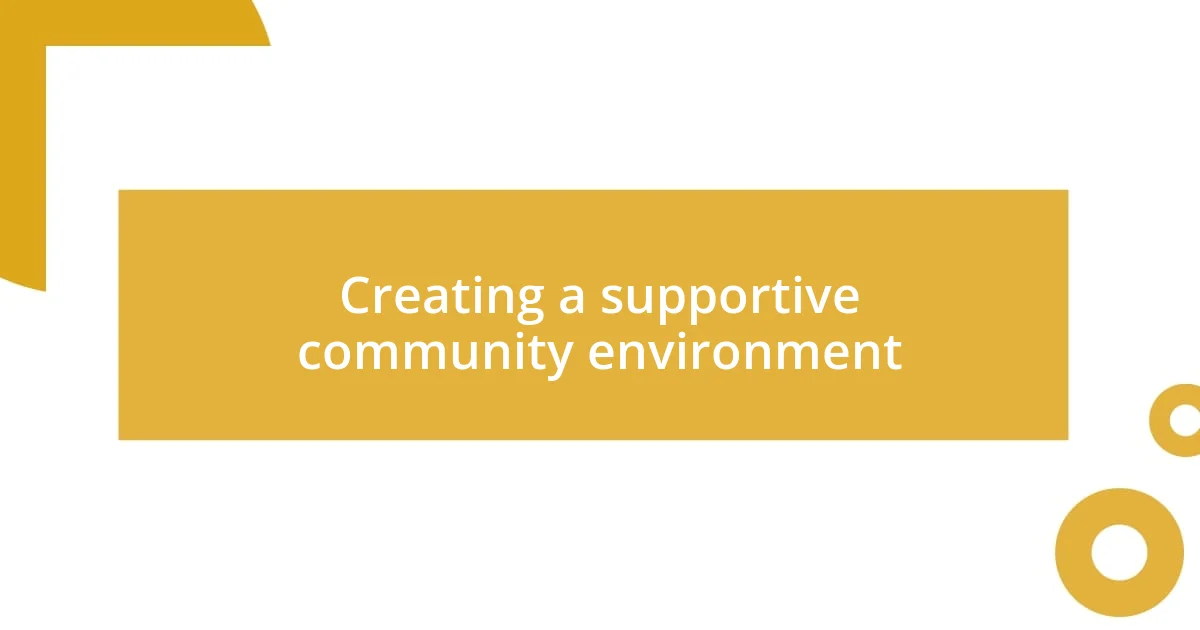
Creating a supportive community environment
Creating a supportive community environment is essential for dismantling victim-blaming narratives. I remember organizing a small community event where we focused on listening. We set up a “story circle,” where participants took turns sharing experiences. The atmosphere was charged with respect and openness, allowing people to express complex emotions. I was amazed at how these shared stories fostered connections, making it clear that we all have a role in supporting one another. Isn’t it incredible how a simple act of listening can help shift perceptions and build trust?
I also think that visible symbols of support play a powerful role in community dynamics. During a local campaign to raise awareness about victimization, we made colorful banners that stated, “You Are Not Alone.” I can still recall the feeling of warmth when I saw someone holding one of those signs, their eyes gleaming with hope. It’s these small gestures that remind individuals that their pain is acknowledged. How often do we miss the impact of collective visual support in making someone feel safer and more understood?
Lastly, creating avenues for ongoing dialogue is crucial. After a series of community workshops, I initiated a monthly meet-up where people could safely share their thoughts and feelings around victimization and support. At one session, a participant openly discussed their struggles with feeling guilt after an assault. The vulnerability in that room was palpable, and I realized how essential it is to provide continuous support spaces. How can we keep the conversation going? I believe it’s about regularly checking in and nurturing those connections, ensuring everyone feels valued, heard, and empowered.




